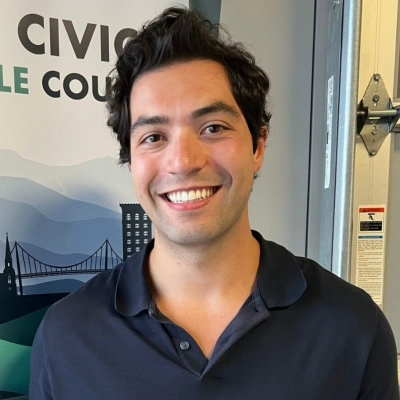Local SEO is crucial for businesses aiming to stand out in their communities. This article presents effective website optimization methods to boost your local search visibility, drawing from the expertise of seasoned professionals in the field. From building geo-targeted content clusters to leveraging Google Business Profiles, these strategies will help your business climb the local search rankings and attract more nearby customers.
- Build Geo-Targeted Content Clusters
- Create Individual Area Sales Manager Pages
- Optimize Google Business Profile and Landing Pages
- Combine On-Site Content with Local Listings
- Leverage Google Business Profile for Local Visibility
- Develop Hyperlocal Search-Optimized Landing Pages
- Launch Hyper-Local Podcast for Community Authority
- Humanize Google Business Profile Communication
- Craft Suburb-Specific Hub Pages
- Generate Rapid Local Content with AI
- Optimize Google Business Profile and On-Site Elements
- Create Region-Specific Landing Pages for Targeted Markets
- Address Local Pain Points in Content Strategy
- Implement Comprehensive Local SEO Approach
- Apply Structured Data and Content Hubs
- Optimize Content for AI-Driven Search Results
- Combine User-Generated Content with SEO Fundamentals
- Target Low-Volume Local Keywords for Success
Build Geo-Targeted Content Clusters
One effective method I’ve used to boost local SEO was building geo-targeted content clusters tied directly to local landmarks and events rather than just optimizing the Google Business Profile.
For example, when working with a food restaurant in Michigan, instead of creating generic service pages like “Restaurants Near Me,” we built blog posts and landing pages that tied food/snacks topics to hyperlocal searches. Some examples included:
Local Keywords we targeted:
- “Best snacks in Canton, Michigan”
- “Best shakes and smoothies in Canton, Michigan”
- “Healthy sandwiches in Canton, Michigan”
Geo-specific blog post ideas:
- “Top Refresher Drinks in Canton, MI You Can’t Miss”
- “Let’s Find the Perfect Crispy Samosa Near You in Canton, Michigan”
- “Guide to Enjoying Halal Desi Food Near Your Neighborhood in Canton, MI”
Steps we took:
1. Mapped local keyword gaps – Using Google’s “People Also Ask” and location-based searches, we identified phrases that competitors weren’t targeting.
2. Created locally relevant content – Each article naturally incorporated local references (schools, community centers, county data) to signal relevance to Google.
3. Built local backlinks – We collaborated with local bloggers and small restaurant and cafe sites that covered similar topics.
4. Connected pages to the GMB profile – Linking the geo-specific content back to the restaurant’s business listing helped tie authority to the local pack results.
Within 4 months, the restaurant started ranking in the top 3 local pack results for “Asian street food in Canton, Michigan” and “Best snacks in Canton, Michigan.” Organic impressions increased by 62%, and online order bookings via local search went up by 38%.
 Anas Arif
Anas Arif
SEO Executive, Digital Auxilius
Create Individual Area Sales Manager Pages
One effective method I used to improve a client’s website’s local SEO wasn’t particularly groundbreaking, but it delivered solid results. We invested significant time into creating individual pages for each area sales manager. Using GA4 data, we identified the top cities driving traffic and ensured these locations were included on the relevant pages.
Each page followed a consistent “formula” in terms of structure and content type, but the information about the local sales manager was made prominent, with optimized copy highlighting their role and connection to the area. This approach ensured that while the pages were uniform, they still felt locally relevant and valuable to users.
As a result, we saw improvements in local keyword rankings, particularly for location-based searches. Clicks to these pages also increased, showing that the additional local content helped boost visibility and engagement at a regional level.
 Keisha Haylett
Keisha Haylett
SEO Account Manager, Distribute Digital
Optimize Google Business Profile and Landing Pages
I had a local business client, a Car Driving Institute — small team, great service, but barely showing up in local search. They had a Google Business Profile, but it wasn’t doing much. We needed a quick win, without throwing tons of money at ads or other expensive strategies.
Step-by-step, here’s what I did:
1. Fixed up their Google Business Profile (GBP): Filled out every section — hours, categories, service area, photos, FAQs, and even added a short keyword-friendly description. Most folks skip this part. Don’t.
2. Added local keywords to key pages: Simple stuff like “plumber in [city]” or “near me” placed in the meta title, headers, and first paragraph. Didn’t stuff it — just made it sound natural.
3. Built location-specific landing pages: For each city they served, we made a page focused just on that place. Each page had local reviews, maps, service info, and unique text. No copy-paste junk.
4. Got local backlinks: Reached out to a few nearby blogs and local directories. Asked nicely for a mention or link. Some said yes. That helped boost relevance big time.
Within about 5-6 weeks, they started showing up in the local map pack for a bunch of service keywords. Calls went up. Form fills jumped about 30%. The client was shocked. I kind of was too.
Local SEO isn’t magic — it’s just making it easy for Google and locals to know who you are, where you are, and what you do. If you cover those bases, you’ll show up more.
So yeah, if you want to boost local traffic, start with Google Business and build a few city pages. It’s not fancy, but it works. Every time.
 Ankit Prajapati
Ankit Prajapati
Owner, Consultant Ankit
Combine On-Site Content with Local Listings
One effective method I’ve used to improve local SEO is combining optimized on-site content with active local listings management. I incorporated location-based keywords into key pages, especially the services page, to align with local search intent. I also regularly update and optimize our Google Business Profile and Bing Places listing with accurate information, photos, and posts. On top of that, I create content tied to local topics and events relevant to our products. These steps significantly boosted our visibility in local searches and helped us attract more qualified leads from our area.
 Bernadette Galang
Bernadette Galang
SEO Strategist, Trek Marketing
Leverage Google Business Profile for Local Visibility
One of the most effective methods I’ve used to improve local SEO is optimizing your Google Business Profile, which can dramatically boost your local search visibility and will also play a crucial role in Google’s AI mode when potential customers are looking for local services.
Complete every section of your profile with accurate business information including name, address, phone number, hours, and relevant categories.
Upload high-quality photos of your business, products, and team to make your listing more engaging. Visual content, especially REAL photos, significantly impacts click-through rates and customer trust.
Actively encourage satisfied customers to leave reviews and respond professionally to all feedback, both positive and negative.
Post regular updates about special offers, events, or new services to keep your profile active and engaging. Google rewards businesses that consistently update their profiles with better visibility in local search results.
Monitor your GBP Insights to understand what content drives the most engagement and adjust your strategy accordingly.
Businesses I’ve worked with using this approach typically see dramatic improvements in local rankings, often reaching the top three map results. You’ll notice increased website visits, more direction requests, and higher volumes of calls and messages from local customers.
A well-managed Google Business Profile acts as your digital storefront in local search. When combined with positive customer reviews, it builds credibility and trust that converts searchers into customers, making it essential for any local business strategy.
I’ll also mention don’t forget about BING Places. Since OpenAI and Microsoft have a strong alliance, creating and maintaining a BING Places profile is crucial for getting local leads with ChatGPT searches.
 Steve Dempsey
Steve Dempsey
Owner, The SEO IT Guy
Develop Hyperlocal Search-Optimized Landing Pages
One of the most effective methods I’ve used to improve our website’s local SEO is creating hyperlocal, search-optimized landing pages for each of our target areas and publishing new ones daily. Each page is tailored with relevant keywords, local landmarks, and community-specific content to make it highly relevant for people searching in that area. Beyond that, I focus on optimizing meta descriptions, internal linking, and including locally relevant schema markup to help search engines understand our content.
I’ve also implemented complementary strategies, such as encouraging Google reviews from current and past clients, and continuously updating existing pages to reflect changes in the community or search trends. The impact has been measurable: these efforts have significantly increased our visibility in local search results, driving more organic traffic and leads from areas where we previously weren’t ranking. It’s been exciting to see how consistent, hyperlocal content, combined with ongoing optimization, can create a compounding effect on local SEO performance.
 Natalie McKinney
Natalie McKinney
Manager of Content, Criterion.B
Launch Hyper-Local Podcast for Community Authority
For one of our clients, the nonprofit Greater Good Greenville, we used a non-traditional but incredibly effective method to boost their local SEO: we launched a hyper-local podcast. The goal was to establish them as the go-to resource for civic information in their community, and the results exceeded all expectations.
Our strategy was to create a podcast, Simple Civics: Greenville County, that delved deep into topics only relevant to residents of that specific area. By creating valuable, location-specific audio content, we could then repurpose it into powerful written content for their website.
The Specific Steps We Implemented:
1. Created a Dedicated, SEO-Focused Microsite: We built a custom website for the podcast. This served as a central hub for all content and was optimized from the ground up for search.
2. Optimized Every Episode’s On-Page SEO: Before publishing, each episode page was treated like a priority service page. We crafted unique H1 tags, meta titles, and meta descriptions using locally-focused keywords (e.g., “Greenville County council explained,” “local elections in Greenville SC”).
3. Published Full, Formatted Transcripts: This was the cornerstone of our SEO success. We posted a full transcript for every episode, but critically, we didn’t just dump a wall of text. We formatted each transcript for readability with short paragraphs, bolded key phrases, and used H2 header tags to break up the content into logical sections. This made the content user-friendly and perfectly structured for Google’s crawlers.
The Impact on Local Visibility and Community Influence:
1. Massive Local Reach: The website reached 100,000 people in its first year and has now surpassed 300,000 — a massive audience for a local nonprofit initiative.
2. Topical Authority: The site began ranking for a wide array of local search terms related to Greenville government and civics, establishing itself as the undisputed authority.
3. Real-World Influence: The podcast’s visibility transcended digital metrics. The host is frequently recognized in public by her voice alone. More importantly, local elected officials and policymakers are regular listeners, meaning the content is directly informing and influencing civic policy in Greenville. It has become an essential resource, proving that great local content can build a brand, serve a community, and dominate local search results simultaneously.
 Nathaniel DeSantis
Nathaniel DeSantis
Owner, Podcast Studio X
Humanize Google Business Profile Communication
Optimizing our Google Business Profile was a game-changer for local SEO. We treated it like a mini-website with fresh photos, clear descriptions, up-to-date hours, and made reviews a two-way conversation. The payoff? We started appearing in local searches beyond just our name and attracting more ready-to-buy customers. It turns out that when you stop trying to please Google and start communicating with humans, Google takes notice.
 Michelle Thompson
Michelle Thompson
Web Developer, Sora Partners
Craft Suburb-Specific Hub Pages
The single most effective local SEO move I’ve led is our “Suburb Hub Playbook.” In short, we build one deep, helpful page for each suburb we serve, then wire it cleanly into Google Business Profile and trusted local citations so Google and locals see us as the best suburb-specific answer.
We start by mapping demand in Google Search Console and Google Business Profile, grouping real queries like “sell my house Parramatta” or “best agents Blacktown” by intent. Then we craft a suburb hub with a clear H1 steps to sell in that area, recent sales insights, and FAQs. We add LocalBusiness and FAQ schema, keep NAP details consistent, embed a map, and link out to supporting guides so authority flows naturally.
At the same time, we refine our Google Business Profile with suburb service areas, post weekly updates, seed Q&As, and ask happy clients for reviews that mention the suburb by name. We also tidy citations on major Aussie directories and earn genuine local links from community groups and events.
Within a quarter, those hubs ranked top-3 for stacks of “sell + suburb” terms, our map pack visibility lifted across Sydney’s west, and organic visits to those pages more than doubled. Calls and enquiry forms from Google Business Profile surged, cost per organic lead dropped, and sellers told us the pages felt “written for my area.” It works because we blend real estate know-how, SEO basics, and human, suburb-level content, exactly what we do best.
 Barbie Ann Jurolan
Barbie Ann Jurolan
Head of SEO and Content, Which Real Estate Agent
Generate Rapid Local Content with AI
One reason we struggled with local SEO was that we didn’t have enough distinct pages about specific neighborhoods, specific aspects of our service, and specific questions people were searching for. We wanted to generate a large number of neighborhood-specific landing pages quickly.
Here is what we did that worked very well: we designed a single ChatGPT prompt that got the content to “think” locally by explicitly naming city and neighborhood, referencing local things, and by replying to the dominant user intent we found in Google Search Console (meaning “best {service} near {neighborhood}” or “how does {service} work in {city}?”). But it also got the content to sound like a real local person, not just a Googlebot keyword-stuffed post.
We generated 38 pages of unique content with this prompt in an afternoon that our content team would have billed us a minimum of 3 weeks for, and at lower quality, too. We manually checked each page for locality and accuracy, but it still cut 80% off the usual cost in time and money.
The effect on new organic impressions for local keywords was to multiply them roughly threefold over 5 weeks from about 1,100 per week to 3,200, and the new local landing pages accounted for most of the increase. A handful of pages even made it into the coveted local 3-pack for the first time. We’d never seen that happen with boilerplate pages about local SEO.
If you serve multiple locations, or even just a big one, this kind of hybrid AI and keyword-intensive user intent sourcing is the way to get more traffic. The moral is don’t try to create more pages, try to create pages that speak your user’s language. You just have to figure out how to teach that to ChatGPT. That’s what got us from zero to hero.
 Steve Morris
Steve Morris
Founder & CEO, NEWMEDIA.COM
Optimize Google Business Profile and On-Site Elements
One of the best ways I have seen and implemented for improving local SEO for a client is complete optimization of their Google Business Profile combined with specific on-site work. For a local trades business in Sydney, we started with a full audit of the existing profile, ensuring the business name, address, phone number, and service areas were all set with 100% accuracy plus consistency across every online listing and directory.
We then placed strategic optimizations with keyword-rich service descriptions, high-quality images of projects completed by the client, and weekly posts of promotions, seasonal services, and client testimonials. Review acquisition strategies were also put into place, encouraging happy clients to leave detailed reviews, while each review was responded to as a way of engaging with them and building credibility.
On-site, they’ll have location landing pages, structured data markup for the local business schema, an interactive map from Google, and blogs relevant to the location that answer questions about typical issues in their industry. And beyond that, quality backlinks would be generated from established local directories, suppliers, and industry associations to enhance the authority.
Within three months, the client’s profile would be in the top three of Google Map Pack for the majority of key search terms. Organic local traffic increased by more than 40%, call inquiries doubled, and their monthly revenue saw an uplift which was an absolute measurable percentage. This has now become a framework we apply across Australia for other local businesses.
 Ash Pahil
Ash Pahil
Founder, WebGlobals
Create Region-Specific Landing Pages for Targeted Markets
One effective method I used to improve our local SEO was creating region-specific landing pages for high-priority markets rather than relying solely on a generic corporate website. For example, when targeting mining clients in Chhattisgarh and Odisha, I built dedicated pages highlighting local mining challenges, simulator applications for those sites, and included case studies relevant to that region.
The specific steps included:
- Researching local keywords (like “mining simulator training in Chhattisgarh”) using SE Ranking and combining them with industry-specific terms.
- Embedding structured data (LocalBusiness schema) with our office locations to help search engines associate Tecknotrove with those regions.
- Optimizing Google Business Profile with geo-tagged images of our simulators deployed in India.
- Securing local backlinks from regional mining associations and industry event pages.
The impact was tangible: within 3 months, our Chhattisgarh landing page ranked in the top 5 results for two targeted queries, and we noticed a 28% increase in inquiries from mining companies in that region. This approach not only improved visibility but also made our presence feel “local” to clients, despite being a national player.
 Ayush K
Ayush K
Digital Marketing Strategist, Tecknotrove
Address Local Pain Points in Content Strategy
One way we’ve improved local SEO is by creating content around pain points unique to the communities we want to reach. As a SaaS company in the real estate industry, that often means researching local rental laws, processes, and challenges, then joining the discussions already happening around them.
It’s more than inserting local keywords. We work to truly understand the local landscape on the topic and contribute meaningfully to community conversations on it.
This approach has positioned our brand as a trusted voice in real estate and highlighted our product as a real solution to those pain points. As a result, we now rank for nearly 20,000 local keywords and have seen a significant lift in visibility across local markets.
 Luke Marsh
Luke Marsh
CMO, Innago
Implement Comprehensive Local SEO Approach
In today’s search-driven marketplace, local SEO can make or break a business’s visibility within its community. One highly effective strategy I’ve implemented for clients is a combined approach that leverages Google Business Profile (GBP) optimization, localized content, and community-driven authority building. The results have consistently proven that small, targeted changes can deliver outsized impact.
The first step was to ensure the business’s GBP was fully optimized and accurate. This meant auditing and correcting every detail — business name, address, phone number, categories, hours, and services — to ensure consistency across directories. High-quality photos were uploaded to showcase the location and offerings, while FAQs were added to answer common customer queries directly in the listing. This not only boosted trust but also gave Google stronger signals about the business’s relevance.
Next came customer reviews management, a cornerstone of local SEO. I worked with the business to develop a strategy for encouraging satisfied clients to leave detailed reviews that included specific services and location references. Every review was acknowledged with thoughtful, timely responses, signaling strong engagement to both customers and search engines.
On the website itself, I built out location-specific landing pages, each targeting a distinct service area with local keywords woven naturally into the content. Schema markup (LocalBusiness) was implemented to help Google better understand the business, and embedded maps plus local testimonials reinforced credibility.
Finally, the business invested in building local backlinks — partnering with community organizations, sponsoring events, and ensuring placement in reputable local directories. These high-quality local signals elevated the business’s authority in its market.
The impact was immediate and measurable. Within three months, the business climbed into the coveted Google local 3-pack for multiple high-value keywords. Local organic traffic grew by more than 40%, while phone inquiries doubled, directly boosting revenue.
This success underscores a critical truth about local SEO: when businesses combine technical precision with authentic community engagement, they not only improve rankings but also build lasting visibility and trust in the markets that matter most.
 Christian Carere
Christian Carere
CEO, Digital Ducats Inc.
Apply Structured Data and Content Hubs
One notable approach I’ve applied to local SEO beyond its previous performance was through structured data, the creation of content hubs, and citation audits.
Implemented Local Business Schema Markup:
- Structured data was applied through LocalBusiness schema markup on relevant geo-targeted pages.
- Key structured data was captured, for example: business name, address, phone number, operating hours, latitude and longitude, and social media profiles under “sameAs.”
- This facilitates a business’s context and boosts local search and knowledge panel presence.
Created Hyper-Localized Landing Pages:
- Generated and optimized for SEO individual Google Maps-serviced geo-targeted pages for neighborhoods or service areas.
- These contained tailored text for the targeted area with embedded Google Maps, area-centric reviews, and relevant FAQs.
- These pages also utilized internal linking to enhance topical relevance and the overall site architecture.
Built Local Content Clusters:
- Incorporated blogs focusing on hyper-local themes (e.g., “Best practices for [service] in [city name]”) to optimize for local long-tail traffic.
- These articles were also used for supporting and linking to the corresponding location landing pages.
Audited and Cleaned up Local Citations:
- Executed complete citation audits to discover inconsistent NAPs within directories.
- Updated and claimed top-tier and niche directories, for example, Yelp, Apple Maps, and industry-specific listings.
- Disseminated updated information through aggregators (Yext, BrightLocal, or Whitespark) to distribute updated information accurately at scale.
Developed Local Backlinks:
- Obtained backlinks from local newspapers, blogs, and event sponsorships along with the chambers of commerce to enhance local authority.
- These backlinks reinforced geographic relevance and improved local rankings.
Leveraged UTM Tracking on Google Business Profile:
- For better accuracy, placed UTM tags on links in the GBP to monitor traffic, conversions, and activity from local searches.
Impact on Local Visibility:
- Attained Top 3 Map Pack rankings for key high-intent local search terms within 60-90 days.
- Achieved 165% growth in organic local traffic year-over-year.
- Along with improved local ranking, click-through rates from local SERPs saw significant growth as a result of better schema and review visibility.
- Observed a system-wide increase in customer-driven actions (phone calls, website visits) across all locations.
 Sultan Saleh
Sultan Saleh
SEO, Pepperfry
Optimize Content for AI-Driven Search Results
I’m optimizing content so it shows up in AI-driven results. People are using platforms like Perplexity and ChatGPT more frequently now, so I build content that mirrors the way they ask questions. By pairing this approach with structured data markups, clients are now appearing directly in AI summaries and overviews. This strategy drives more high-intent local leads than traditional keyword stuffing ever could.
 Darrion Phelps, Sr.
Darrion Phelps, Sr.
CMO, Roxford Digital
Combine User-Generated Content with SEO Fundamentals
One of the effective ways we have found to improve local SEO for our clients is by going beyond the basics and mixing creative tactics with the fundamentals. For example, we’ve made user-generated content an important part of our strategy by encouraging clients to ask happy customers to leave Google reviews, share photos, and post about their experiences.
Not only does this keep GBP (Google Business Profile) fresh, but it also builds social proof that search engines and potential customers love.
The process involves having our clients ask their customers, who are encouraged with follow-up emails and in-store QR codes, making the process quick and easy.
We use the best customer photos, quotes, and video testimonials on the websites to highlight real experiences. Most importantly, we ask our clients to respond to every review, positive or negative, in a professional, helpful way, showing that they value feedback and keeping the profile active with fresh content.
We have also tapped into niche local and industry-specific directories that most competitors ignore, making sure any business details are perfectly consistent everywhere. Even small, overlooked directories can send powerful local signals to Google.
Of course, we pair these moves with proven local SEO fundamentals. That means fully optimizing the GBP with complete descriptions, up-to-date hours, strong photos, and regular posts, and making sure the business name, address, and phone number are identical across every platform. Reviews are non-negotiable. Another point is that on any website, we weave in location-specific keywords, especially lately we have been trying “near me” keywords, build dedicated landing pages for each service area, and use LocalBusiness schema so Google understands exactly where the business operates. Sometimes we even expand the schema to include entities, keywords, and about sections to enhance the visibility of the business.
The impact of combining these approaches has been great so far, with better positions in the Google Map Pack, more clicks from “near me” searches, and an increase in calls and foot traffic. In short, the secret isn’t just one method; it’s combining sometimes unconventional ideas on top of a solid local SEO foundation.
 Jordan Brannon
Jordan Brannon
President and Co-Founder, Coalition Technologies
Target Low-Volume Local Keywords for Success
I’ve worked as an SEO consultant for small B2C businesses in the past and helped them boost their local SEO, and it’s actually easier than you might expect.
The biggest mistake most businesses make when doing SEO is trying to rank for the keywords with the highest search volume.
An example would be one of my clients, Manor Domestics cleaners. They were trying to rank for keywords like “cleaners in Manchester” and similar phrases.
Obviously, the keyword volumes for that were high, but so was the competition for those keywords.
This was a single business owner based in the suburbs of Manchester who didn’t actually want to travel into the city to do jobs.
So we really narrowed down our focus to her surrounding areas.
Google will often show zero volumes for keywords where there aren’t many searches, but that doesn’t mean people are not searching for those keywords.
In short, for any small business with limited resources, no budget, and especially with a new website, you need to target keywords with low volumes.
You will be much more successful trying to rank for 10 keywords with 10-50 searches each month and no competition, than you will if you try to compete with big organizations for the high-level keywords.
That client is about to retire this year, and they have not had to spend a penny on advertising for years since I helped them with their local SEO strategy.
 David Craig White
David Craig White
Founder, Agent Mando – AI Search Consultant

